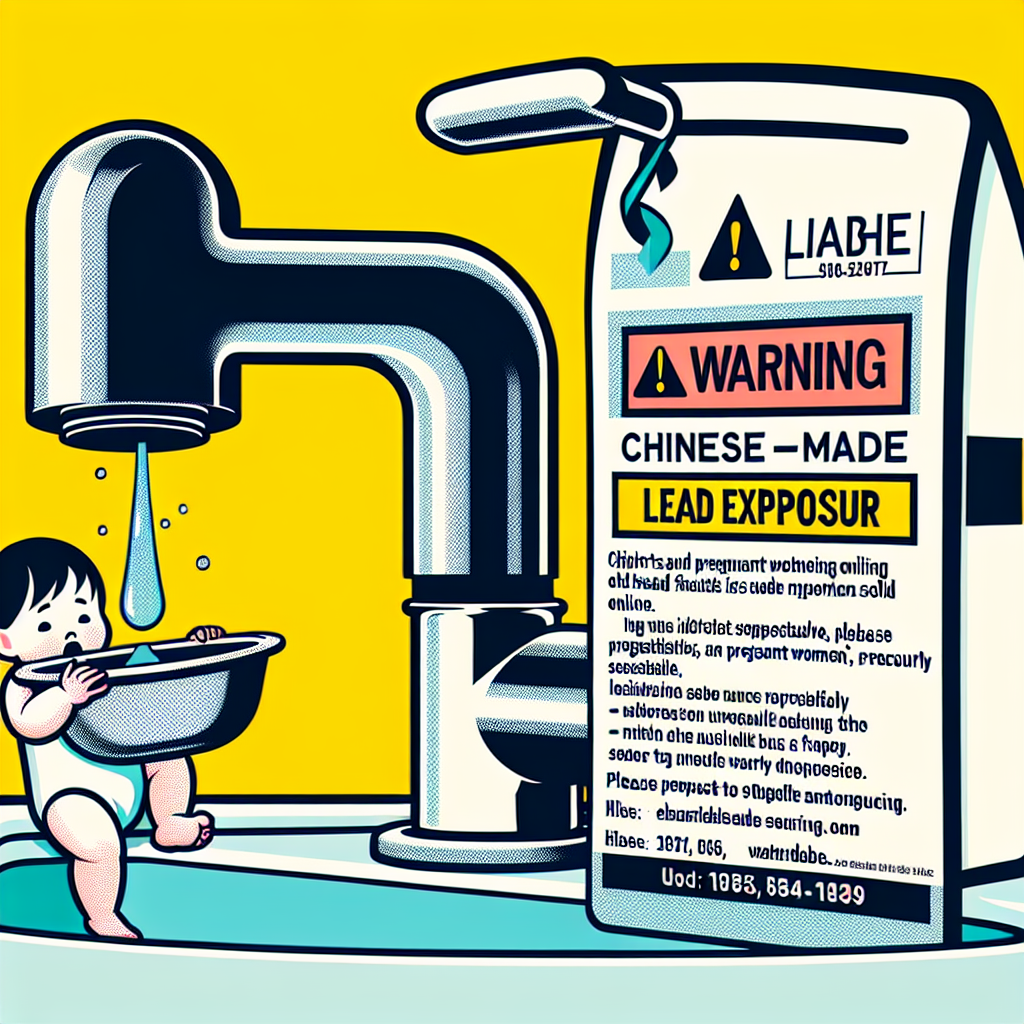On Thursday, May 15, the U.S. Consumer Product Safety Commission (CPSC) issued a warning urging the immediate discontinuation of certain Chinese-made faucets sold on Amazon, out of concern for lead exposure to infants and pregnant women.
The CPSC stated that using these substandard bathroom and kitchen faucets could lead to lead seeping into drinking water, with elevated levels of lead posing particularly severe risks to infants and pregnant women. Lead ingestion can have harmful effects on the nervous system of infants and pregnant women, including issues related to attention, decreased cognitive abilities, and lowered IQ.
Previously, the CPSC had taken enforcement actions against Chinese-manufactured faucets.
These faucets are priced between $30 and $70 on the Amazon website. The CPSC mentioned that many faucets lack brand markings or other source identification labels, as well as safety certifications.
Earlier this week, the CPSC released the results of a public health and safety investigation, necessitating a public warning about these faucets due to potential hazards that could pose risks to individuals.
So far, all the warned Chinese companies have not agreed to conduct an acceptable recall action.
Therefore, the CPSC is urging American consumers to immediately stop using these Chinese-made faucets sold on Amazon.
Below are some of the Chinese-made faucet models and names released by CPSC:
– KZH Bathroom Faucet, sold by Yajie Bathroom, manufactured in China
– VESLA HOME Kitchen Faucet, sold by VESLA HOME, manufactured in China
– Rainsworth Bathroom Faucet, sold by Lechang Bathroom, manufactured in China
– CEINOL Bathroom Faucet, sold by CEINOL-USA, manufactured in China
The CPSC urges consumers to stop using and dispose of these faucets immediately.
If consumers need to use these faucets until replacement, they should make sure to run the water for 5 seconds before using it.
Additionally, consumers can take the following measures:
1. Look for faucets that meet NSF/ANSI Standard 61, which specifies product safety standards, including the maximum allowable levels of lead and other contaminants.
2. As a regular practice, run the faucet for 15 seconds in the morning after waking up and again at the end of the day, or after a water outage of six hours or longer. Flushing the water can reduce the contact time with lead that may be present in the plumbing system.
3. Use cold water for drinking, cooking, and preparing baby formula. Boiling water does not remove lead from the water.
4. Regularly clean or replace the faucet aerator to remove sediments and particles, particularly when drinking or cooking.
5. Contact the local health department or water utility company for water quality testing inquiries, or visit epa.gov/safewater for information on lead levels in drinking water.

